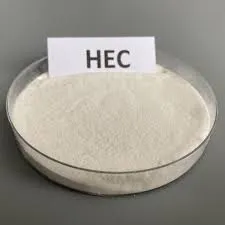
Nov . 07, 2024 07:17 Back to list
hpmc grades
Understanding HPMC Grades A Comprehensive Overview
Hydroxypropyl Methylcellulose (HPMC) is a versatile cellulose ether that has gained prominence in various industries, primarily pharmaceuticals, food, and construction. One of the critical aspects of HPMC is the existence of different grades, each tailored for specific applications and performance requirements. Understanding these HPMC grades is essential for selecting the right product to meet particular needs.
What is HPMC?
HPMC is a semi-synthetic polymer derived from cellulose. It is created through a controlled chemical process that introduces hydroxypropyl and methyl groups into the cellulose chain. This modification enhances the solubility, stability, and film-forming properties of cellulose, making HPMC particularly useful in a variety of formulations.
Key Grading Criteria
HPMC grades are classified based on several criteria
1. Viscosity One of the primary distinguishing factors between HPMC grades is their viscosity. Viscosity affects the thickening ability, which is crucial in formulations such as adhesives, paints, and food products. High-viscosity grades are preferred in applications where significant thickening is required.
2. Hydroxypropyl Content The ratio of hydroxypropyl groups affects the solubility and gel-forming properties of HPMC. Grades with higher hydroxypropyl content are typically more soluble in cold water, making them suitable for pharmaceutical applications, such as controlled drug release.
3. Methoxy Content Methoxy content also plays a role in determining the properties of HPMC. Different levels of methoxy groups can affect the polymer's density and water retention capabilities, influencing its performance in construction materials and personal care products.
hpmc grades

4. Ash Content In specific applications, low ash content is essential for enhancing the performance and stability of HPMC in final products. High purity grades are often preferred in pharmaceutical and food applications to ensure safety and efficacy.
Applications of HPMC Grades
1. Pharmaceuticals In the pharmaceutical industry, HPMC is commonly used as a binder in tablets, a coating agent, and a controlled drug release agent. Formulations requiring specific release profiles often utilize grades with tailored viscosity and solubility properties.
2. Food Industry HPMC finds significant application in the food sector as a thickener and emulsifier. Different grades can be employed to enhance texture, stability, and shelf life of various food products, including sauces, dressings, and dairy products.
3. Construction In construction, HPMC is utilized as an additive in cement-based products. The thickening and water-retention properties of certain grades help improve workability, adhesion, and drying time.
4. Personal Care HPMC serves as a thickener and stabilizer in various cosmetic and personal care formulations, such as lotions, creams, and shampoos.
Conclusion
Choosing the appropriate HPMC grade is vital for achieving optimal results in various applications. Understanding the distinct characteristics based on viscosity, hydroxypropyl and methoxy content, and purity ensures that formulators make informed decisions conducive to the performance and quality of their products. As industries continue to innovate and develop new formulations, the importance of selecting the correct HPMC grade will only grow, underpinning the versatility and utility of this remarkable compound. Whether in pharmaceuticals, food, construction, or personal care, HPMC remains an invaluable resource for achieving desired formulation outcomes.
-
Versatile Hpmc Uses in Different Industries
NewsJun.19,2025
-
Redispersible Powder's Role in Enhancing Durability of Construction Products
NewsJun.19,2025
-
Hydroxyethyl Cellulose Applications Driving Green Industrial Processes
NewsJun.19,2025
-
Exploring Different Redispersible Polymer Powder
NewsJun.19,2025
-
Choosing the Right Mortar Bonding Agent
NewsJun.19,2025
-
Applications and Significance of China Hpmc in Modern Industries
NewsJun.19,2025







